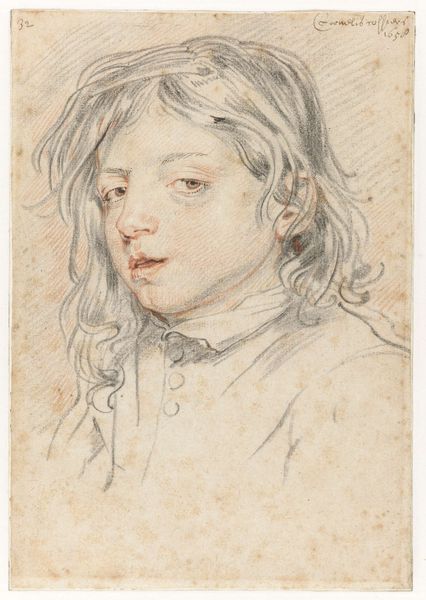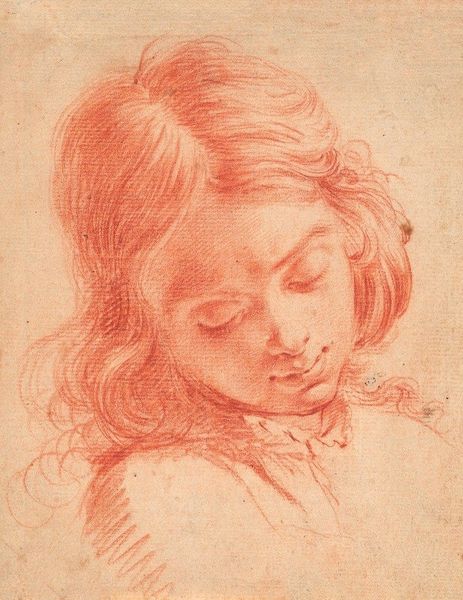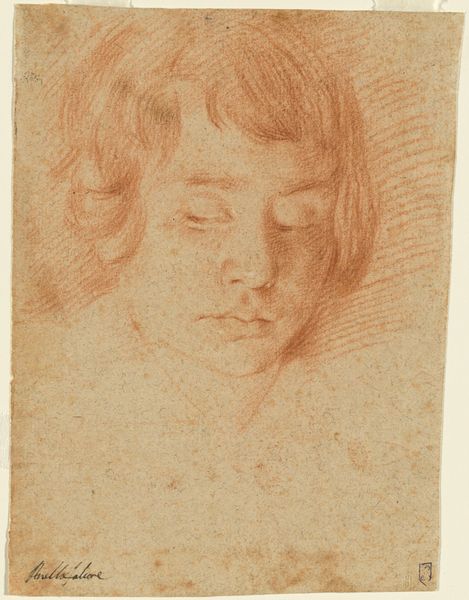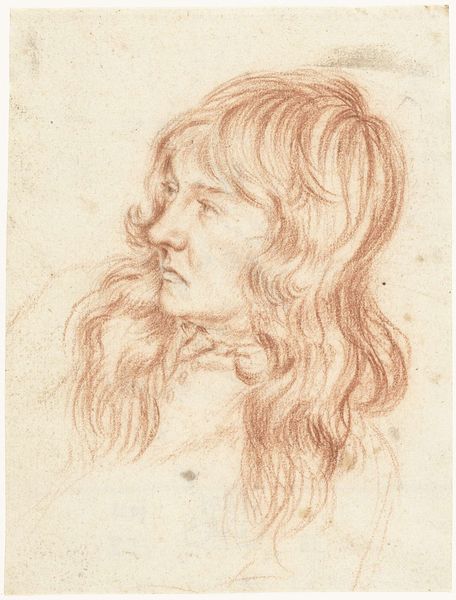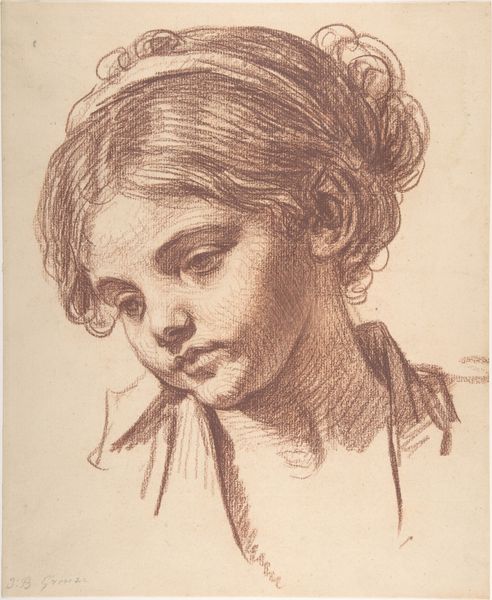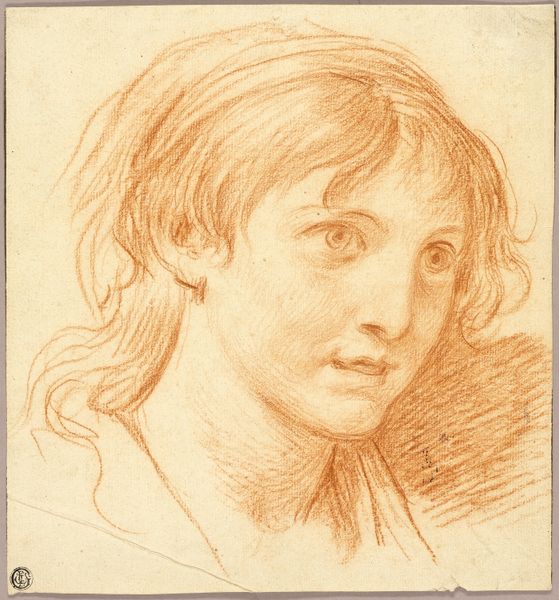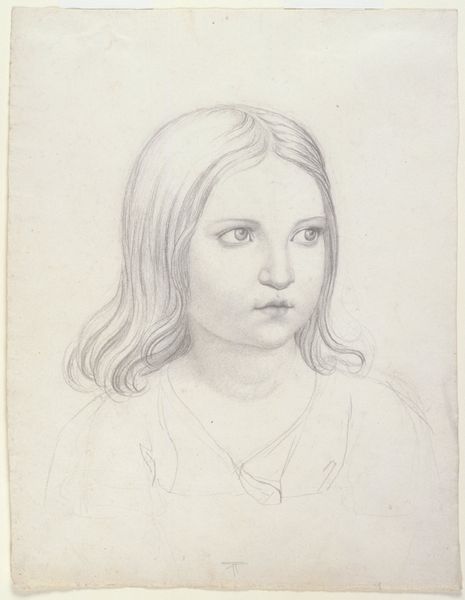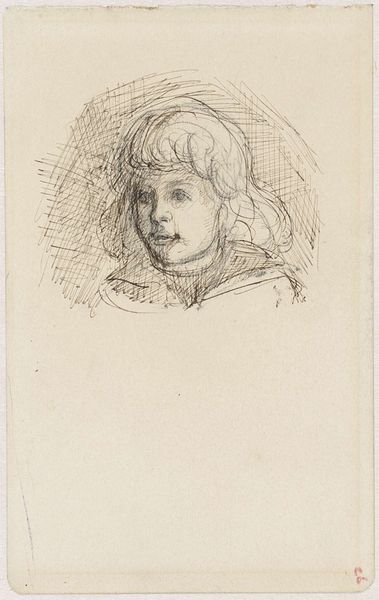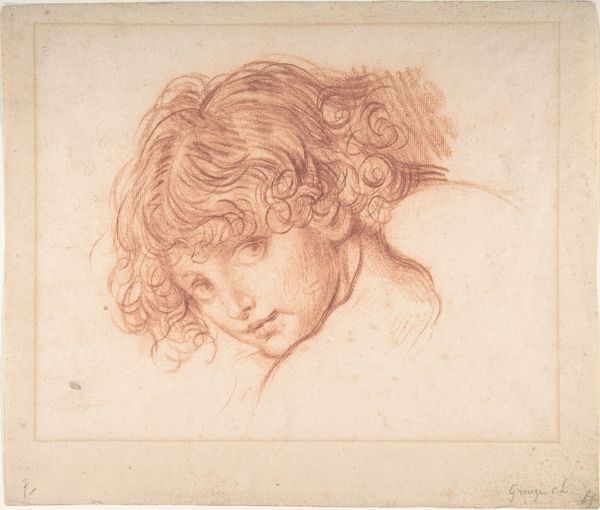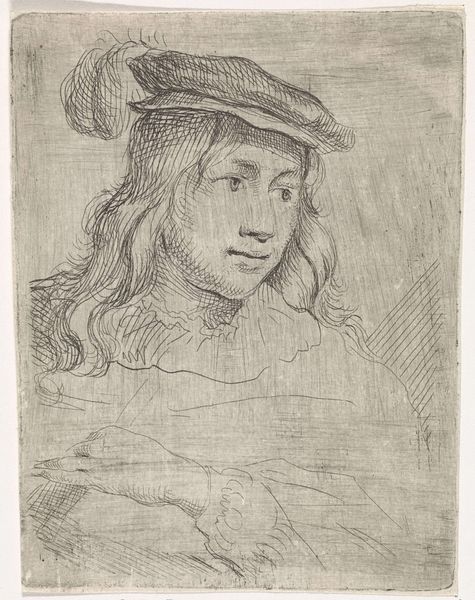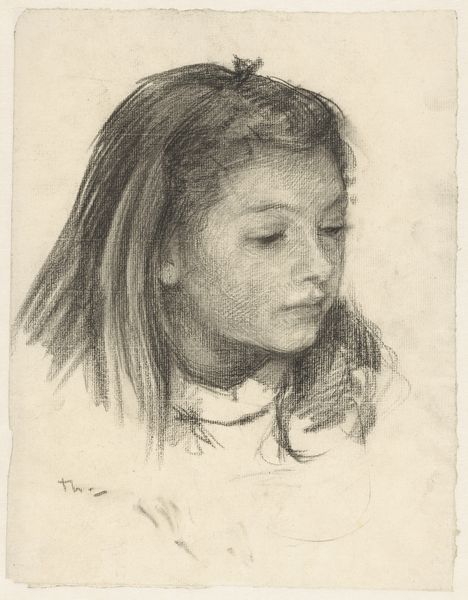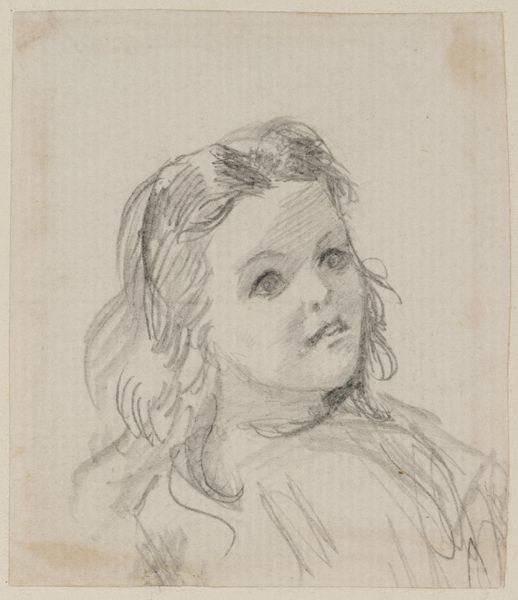
drawing, pencil
#
portrait
#
pencil drawn
#
drawing
#
toned paper
#
facial expression drawing
#
light pencil work
#
dutch-golden-age
#
pencil sketch
#
figuration
#
personal sketchbook
#
pencil drawing
#
pencil
#
sketchbook drawing
#
portrait drawing
#
pencil work
Dimensions: height 115 mm, width 96 mm
Copyright: Rijks Museum: Open Domain
Editor: Here we have Gerard ter Borch II's "Boy with Downcast Eyes," dating from around 1672 to 1678. It’s a delicate drawing rendered in pencil. The soft lines and the subject's gaze create such an introspective and gentle mood, almost melancholic. What strikes you most about this piece? Curator: Well, considering the context of the Dutch Golden Age, portraits, especially those depicting children, often served purposes beyond mere likeness. Think about the burgeoning merchant class, keen to display their status and moral standing. A portrait like this, with its subtle air of piety and humility, could have served to project an image of virtuous upbringing. Do you see the meticulous detail in the ruffled collar, contrasted with the almost dreamlike rendering of the face? Editor: Yes, it's quite interesting. The collar is so precise, almost photorealistic, whereas the boy's expression is more…suggested. Curator: Exactly! This contrast speaks to me. Borch might be making a commentary on societal expectations versus the inner lives of individuals. Was this intended as a study, a preliminary sketch for a larger work, or a statement in itself? The reception would surely vary in any of those possibilities. Think about how this image might function as a private devotional object versus a public display of wealth and decorum. Editor: So, it’s less about the boy's individual sadness, perhaps, and more about what his posture represents within the social landscape? That is fascinating! Curator: Precisely! And considering the institutional forces at play—the art market, patronage, and the Royal Academy—drawings like this negotiate between personal expression and societal demands. Editor: This makes me think differently about portraiture of that period! I'll definitely look into this more. Curator: Indeed. By analyzing this sketch, we’ve unveiled multiple layers, reflecting both the artist’s skill and the complex socio-political environment in which it was created.
Comments
rijksmuseum about 2 years ago
⋮
Of all the children whom Gerard ter Borch taught to draw, only his eldest son Gerard the Younger developed into a professional artist. He specialized in portraits and genre paintings done in a highly refined style. He achieved the same level of finish in this drawing. The light falling on the face and hair of the boy is particularly felicitously rendered.
Join the conversation
Join millions of artists and users on Artera today and experience the ultimate creative platform.
